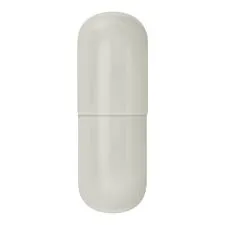
Dec . 11, 2024 17:17 Back to list
Understanding the Potential Side Effects of HPMC in Various Applications
Understanding the Side Effects of HPMC A Comprehensive Overview
Hydroxypropyl Methylcellulose (HPMC) is a widely used polymer in various applications, most notably in the pharmaceutical, cosmetic, and food industries. As an excipient in drug formulations, HPMC serves as a thickening agent, emulsifier, and stabilizer, enhancing the bioavailability and overall effectiveness of medications. While HPMC is generally considered safe, understanding its potential side effects is essential for healthcare providers and patients alike.
Common Side Effects
Most individuals tolerate HPMC well, as it is non-toxic and non-irritating. However, there are instances where users may experience certain side effects. The most common reported side effects include gastrointestinal disturbances such as bloating, gas, and diarrhea. These effects are usually mild and transient but can be discomforting for some individuals, particularly those with pre-existing gastrointestinal conditions.
In rare cases, patients may experience allergic reactions to HPMC. Symptoms may include skin rashes, itching, or respiratory issues such as difficulty breathing. Those with known allergies to cellulose derivatives should exercise caution and consult with a healthcare professional before using products containing HPMC.
Impact on Drug Absorption
The role of HPMC in pharmaceutical formulations is to enhance drug delivery and absorption. While this is advantageous, it can also pose challenges. In some cases, HPMC can form gels that may inhibit the release and absorption of certain drugs, particularly in individuals with varying gastrointestinal conditions. Patients on medications that are sensitive to excipient interactions should consult their healthcare provider to ensure that HPMC will not interfere with their treatment regimen.
hpmc side effects

Potential for Drug Interactions
Although HPMC itself is unlikely to have severe drug interactions, its thickening and stabilizing properties may affect the solubility and bioavailability of certain medications. This is particularly relevant for drugs that rely on rapid absorption for efficacy. Patients taking multiple medications should discuss potential interactions with their physician or pharmacist to ensure optimal therapeutic outcomes.
Environmental Considerations
From an environmental perspective, the production and disposal of HPMC can raise concerns. While HPMC is derived from natural sources, its manufacturing process may involve chemical treatments that can result in environmental pollution if not managed properly. Moreover, as an ingredient in various products, improper disposal can contribute to waste and environmental degradation. It is crucial for manufacturers to adhere to sustainable practices to minimize the ecological impact of HPMC.
Conclusion
HPMC is a versatile compound with numerous applications, particularly in the pharmaceutical sector. While most individuals experience little to no side effects, it is vital to remain vigilant about potential adverse reactions, especially for those with pre-existing health conditions or allergies. Continuous research and patient education are necessary to ensure safe usage of HPMC in a variety of products. The importance of consulting healthcare professionals regarding drug interactions and understanding the implications of HPMC in formulations cannot be overstated. With adequate awareness and precaution, patients can effectively incorporate HPMC-containing products into their health regimens without undue risk.
-
Versatile Hpmc Uses in Different Industries
NewsJun.19,2025
-
Redispersible Powder's Role in Enhancing Durability of Construction Products
NewsJun.19,2025
-
Hydroxyethyl Cellulose Applications Driving Green Industrial Processes
NewsJun.19,2025
-
Exploring Different Redispersible Polymer Powder
NewsJun.19,2025
-
Choosing the Right Mortar Bonding Agent
NewsJun.19,2025
-
Applications and Significance of China Hpmc in Modern Industries
NewsJun.19,2025







